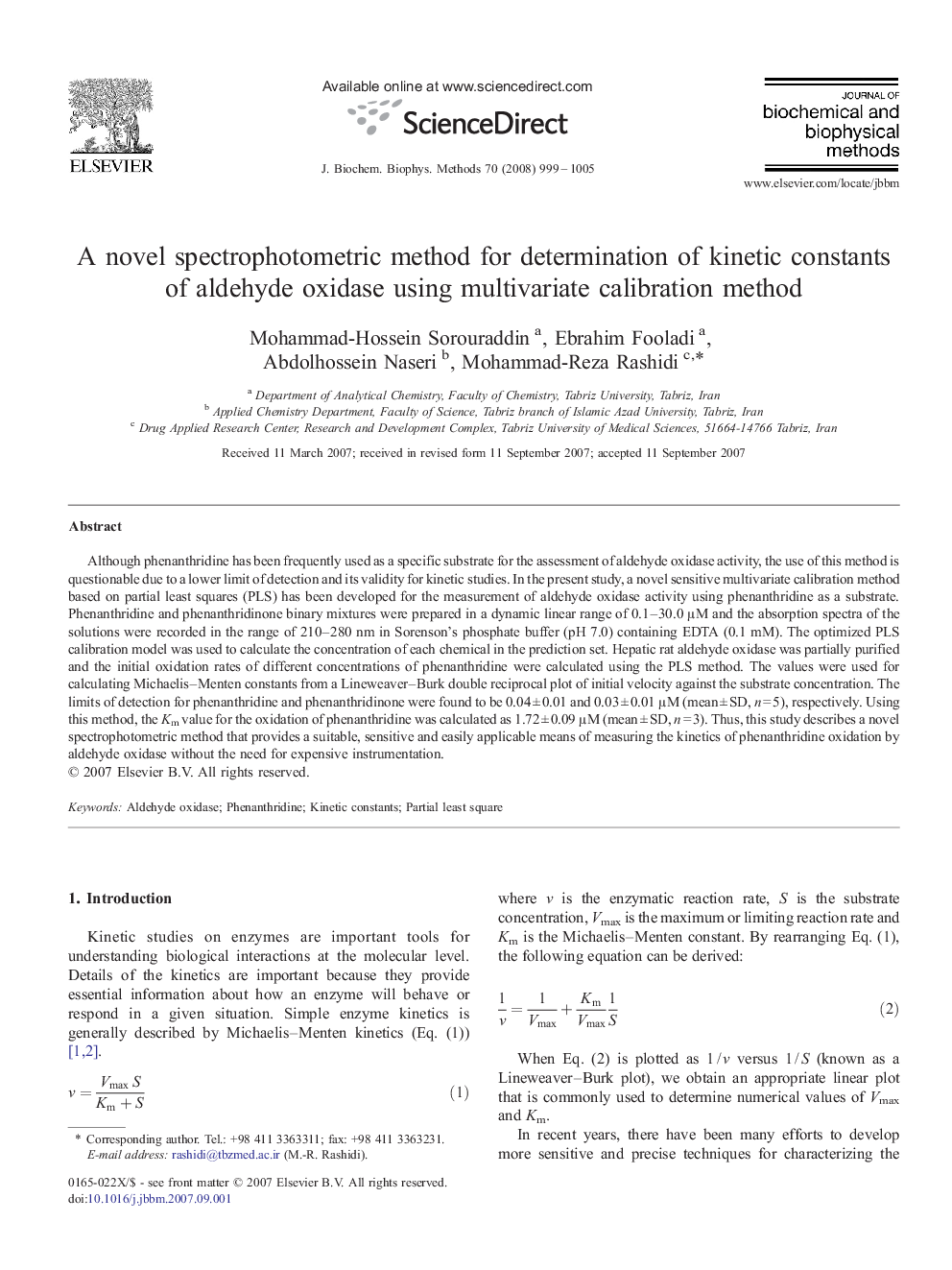| Article ID | Journal | Published Year | Pages | File Type |
|---|---|---|---|---|
| 1988380 | Journal of Biochemical and Biophysical Methods | 2008 | 7 Pages |
Although phenanthridine has been frequently used as a specific substrate for the assessment of aldehyde oxidase activity, the use of this method is questionable due to a lower limit of detection and its validity for kinetic studies. In the present study, a novel sensitive multivariate calibration method based on partial least squares (PLS) has been developed for the measurement of aldehyde oxidase activity using phenanthridine as a substrate. Phenanthridine and phenanthridinone binary mixtures were prepared in a dynamic linear range of 0.1–30.0 μM and the absorption spectra of the solutions were recorded in the range of 210–280 nm in Sorenson's phosphate buffer (pH 7.0) containing EDTA (0.1 mM). The optimized PLS calibration model was used to calculate the concentration of each chemical in the prediction set. Hepatic rat aldehyde oxidase was partially purified and the initial oxidation rates of different concentrations of phenanthridine were calculated using the PLS method. The values were used for calculating Michaelis–Menten constants from a Lineweaver–Burk double reciprocal plot of initial velocity against the substrate concentration. The limits of detection for phenanthridine and phenanthridinone were found to be 0.04 ± 0.01 and 0.03 ± 0.01 μM (mean ± SD, n = 5), respectively. Using this method, the Km value for the oxidation of phenanthridine was calculated as 1.72 ± 0.09 μM (mean ± SD, n = 3). Thus, this study describes a novel spectrophotometric method that provides a suitable, sensitive and easily applicable means of measuring the kinetics of phenanthridine oxidation by aldehyde oxidase without the need for expensive instrumentation.
